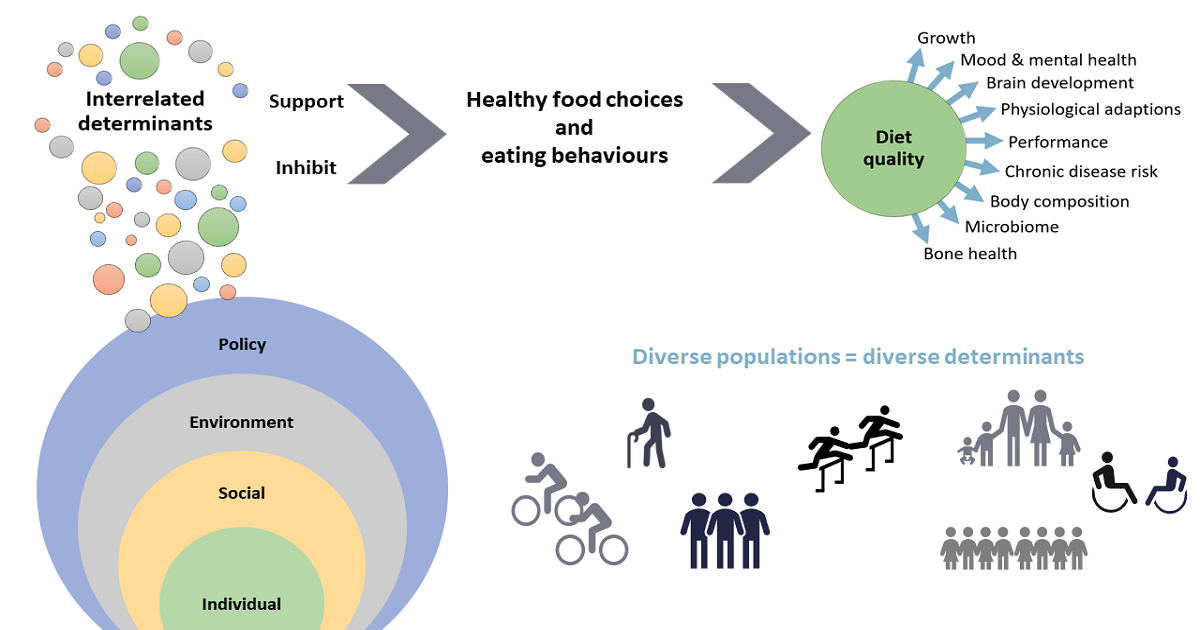Healthy Eating and Determinants of Food Choice
A special issue of Nutrients (ISSN 2072-6643). This special issue belongs to the section "Nutritional Policies and Education for Health Promotion".
Deadline for manuscript submissions: closed (5 March 2024) | Viewed by 20821

Special Issue Editors
Interests: nutrition; food knowledge; food choice; dietary intake; eating behaviours; food provision; food environment; sports nutrition
Special Issues, Collections and Topics in MDPI journals
Interests: food security; maternal and infant nutrition; food supply and food choice
Special Issues, Collections and Topics in MDPI journals
Special Issue Information
Dear Colleagues,
Despite diet being vital to health, and information on healthy eating being more accessible that ever, there is still significant disparity between dietary intake and healthy eating guidelines. The factors that impact food choices are broad reaching, extending across policy, environmental, social and individual domains. Over 400 different determinants of nutrition and eating have been identified in the literature, highlighting the complexity of food choices. Given that nutrition interventions strive to support factors that enable healthy eating, it is crucial to understand the key factors impacting food choices to deliver effective nutrition interventions.
The aim of this Special Issue is to provide the latest evidence on the determinants of food choices in relation to diet and health in any population. We encourage researchers in this field to submit original research or high-quality reviews to broaden the knowledge in this field.
We look forward to your submission.
Prof. Dr. Fiona Pelly
Dr. Libby Swanepoel
Dr. Rachael Thurecht
Guest Editors
Manuscript Submission Information
Manuscripts should be submitted online at www.mdpi.com by registering and logging in to this website. Once you are registered, click here to go to the submission form. Manuscripts can be submitted until the deadline. All submissions that pass pre-check are peer-reviewed. Accepted papers will be published continuously in the journal (as soon as accepted) and will be listed together on the special issue website. Research articles, review articles as well as short communications are invited. For planned papers, a title and short abstract (about 100 words) can be sent to the Editorial Office for announcement on this website.
Submitted manuscripts should not have been published previously, nor be under consideration for publication elsewhere (except conference proceedings papers). All manuscripts are thoroughly refereed through a single-blind peer-review process. A guide for authors and other relevant information for submission of manuscripts is available on the Instructions for Authors page. Nutrients is an international peer-reviewed open access semimonthly journal published by MDPI.
Please visit the Instructions for Authors page before submitting a manuscript. The Article Processing Charge (APC) for publication in this open access journal is 2900 CHF (Swiss Francs). Submitted papers should be well formatted and use good English. Authors may use MDPI's English editing service prior to publication or during author revisions.
Keywords
- dietary intake
- food choice
- eating behaviour
- diet quality
- nutrition knowledge
- food environment






